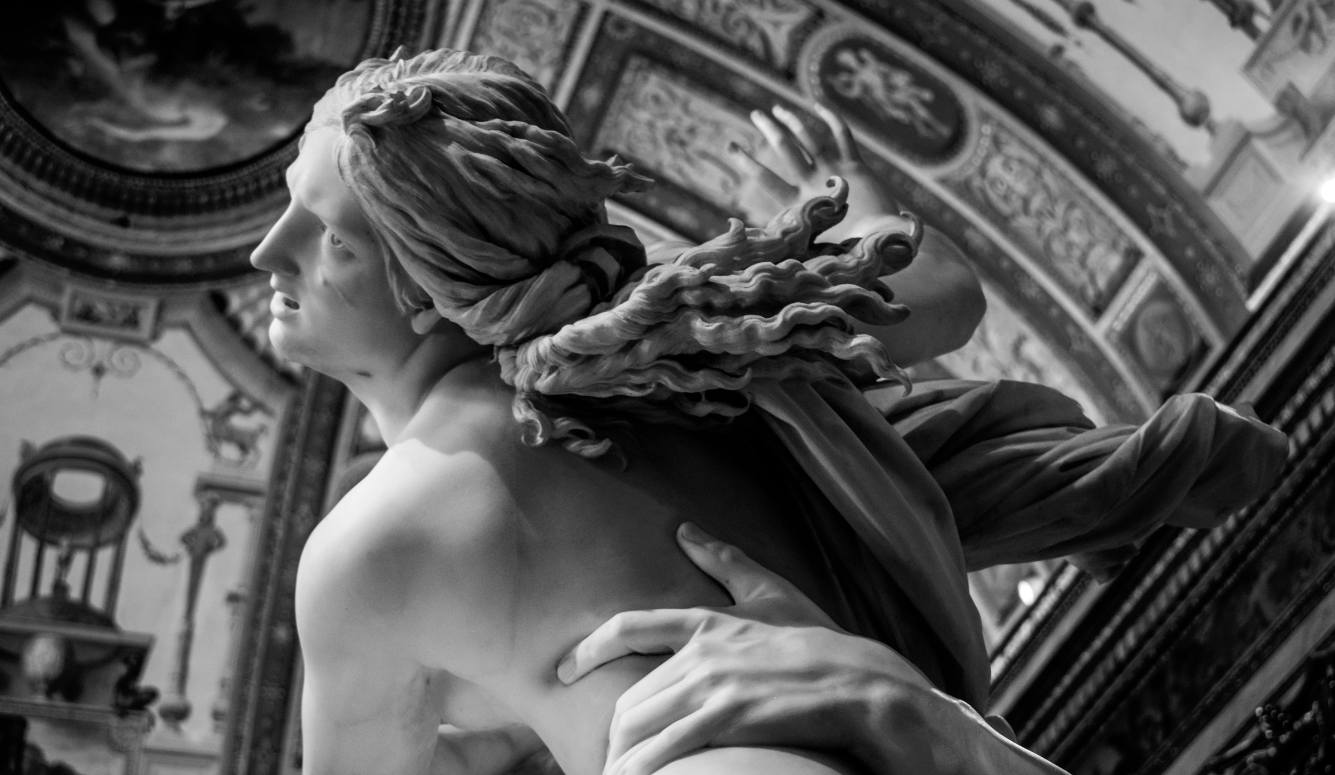Feminism
How to Tell if You’re Living in a Patriarchy
Arguments that patriarchy exists in the West today are largely dependent on reinventions of the concept that would be better dispensed with.

Editor’s Note: This article was first published in Areo Magazine in July 2017.
The word “patriarchy” seems to be everywhere. In newspapers, online magazines, talk shows, or social media, as soon as the issue of gender relations or rights is raised, so is the spectre of “the patriarchy.” Battles rage over what it means, whether it exists now, and whether it ever did exist. My area of research focuses on the ways in which English women negotiated patriarchy using religion in the late medieval and early modern period, so I am fairly confident it did. A historical understanding of patriarchy rejects both the claim that it was a straightforward form of male domination and the claim that it is a feminist fabrication and never really existed. Arguments that patriarchy exists in the UK, US, or much of the Western world today are largely dependent on reinventions of the concept that I argue would be better dispensed with. Instead, they should be replaced with more rigorous investigations of whether gender discrimination exists and a more positive attitude towards individuality.
Patriarchy literally means “rule of the father” and on the most basic level, refers to literal fathers having the right to direct the family which includes sons. When sons marry, they become the head of their own family and when daughters do, they come under the rule of their husbands. In patriarchal societies, women are excluded from positions of ruling power and denied autonomy in their own lives. This was imposed by law and social expectation for most of recorded history. In Christian cultures, the idea of the patriarch became closely related to the idea of God, the Father. Although the likelihood is that God was depicted as a father because the concept of the father as one who both loves and disciplines and is to be respected and obeyed was already widely accepted, Christianity perpetuated this as a moral imperative.
When considering patriarchy in historical terms, it is often pointed out that a naive view of society in which all men had power over all women fails to take account of class and that women of the ruling class had rights and advantages that men of lower ones did not. This is undoubtedly true. Hierarchical class structures required men to defer to women of a higher one in many ways throughout the medieval period and only changed gradually in the modern one. However, it is a mistake to try to “even things up” in this way and argue that because nearly everyone was oppressed for most of history, gender inequality was insignificant. There existed throughout medieval and early modern English history a deeply gendered structure of society in which ruling class men had authority over ruling class women and working class men over working class women. Women were required to obey their husbands and nearly always required to marry either by family or by financial necessity. Wives had no right to own property until 1870, no right to decide their own movements, no right to their children or to work without their husband’s consent. Professions and roles of public authority were simply closed to them.
On a deeper ideological level, there was an understanding of the masculine as that which rules and the feminine as that which is ruled. This was so deeply entrenched that murder of a husband was considered treason in England. The Petty Treason Act of 1351 recognised three cases of aggravated murder in which a superior is betrayed by a subordinate: servants killing masters, clerics killing prelates, and wives killing husbands. This was not abolished until 1828.
When Elizabeth I came into power in 1558, she needed to use a considerable amount of rhetorical skill to overcome the very real scepticism of her advisers and subjects about a female leadership. For this, she depended upon a medieval understanding of the king’s “body politic” and “body natural” in which the king was both a divinely appointed ruler and a mortal man to enable her advisers and subjects to feel they could separate her female form from her royal authority. We see this in her speech at Tilbury in 1588,
“I know I have the body but of a weak and feeble woman; but I have the heart and stomach of a king, and of a king of England too.”
Of course, she never married. A better criticism of the concept of patriarchy as a simplistic gendered power structure is that this ignores the fact that there are different spheres of power and different ways to exert it and that whilst women may not have had much legal power, they possessed it in other forms. Much of my work has focused on the ways in which women obtained autonomy and authority for themselves using the systems of law, social expectation, community justice, and religion. Recent social history attempting to uncover women’s history has revealed a far more active role for women than was previously assumed. A naive reading of history could assume that because records relating to women so often take the form of sermons and treatises telling women to stay at home and be quiet, this is how women lived. In the popular mid-fourteenth century text, “How the Goode Wife Taught Hyr Doughter” young women are instructed to be “meke and myld,” particularly to husbands referred to as “your lord” and to stay at home.
Go not as it wer a gase [goose]
Fro house to house, to seke the mase [entertainment]
Ne go thou not to no merket
To sell thi thryft, bewer [beware] of itte.
Ne go thou nought to the taverne,
Thy godnes for to selle therinne;
…
Wherever thou comme at ale other wyne [beer or wine]
Take not to myche, and leve be tyme;
…
Ne go thou not to no wrastylynge [wrestling]
Ne git to no coke schetynge [cock shooting]
However, it should be clear that there would be no need to keep telling women to avoid talking a lot, talking loudly, talking angrily, arguing with husbands, visiting friends, markets, taverns, getting drunk and attending wrestling and blood sports if they weren’t doing all those things fairly consistently.
Christian cultures also gave women the opportunity for a limited autonomy and authority via religion despite religious doctrine frequently being the justification for denying them both. In a patriarchal Christian society, the ultimate patriarch was God and it was understood within medieval Catholicism that God talked to men and women. This enabled holy women and those who would be saints to become figures of spiritual authority and it also provided lay women with some power to “go over the heads” of their husbands and fathers and cite communication from God himself. Within early modern Protestantism, it was understood that women could and should interpret the bible for themselves. Drawing on Christian humanism in 1611, Aemilia Lanyer was enabled to write an intensely logical rhetorical refutation of the idea that women should be subordinated due to the sin of Eve by pointing out that it was men who killed the son of God and saying, very much tongue in cheek, that she was prepared to let bygones be bygones if they were.
Historians have uncovered records of women using a strong knowledge of law to their advantage and consistently organising and managing Church events around which communities were based. The latter in particular put them very much in charge of the social lives of communities. Women could also call upon and enact forms of community justice to support them, and before the advent of policing, this was often the strongest form of law.
There is a remarkable account from the late 14th century of a Leicestershire priest named William de Swynderby (William the Hermit); who preached so frequently about the failings and pride of women (de mulieribus defectibus et superbia) that the townswomen plotted to stone him out of town. Hearing of this, he hastily turned his attention to merchants. He seems not to have felt that he could depend on the men of the town to stop the women and, in fact, his contemporary, Henry Knighton, describes this incident as an example of his flaw of “not knowing when to stop” (finem facere nesciebat).
Further complicating simplistic ideas of patriarchy is the fact that women were generally accepted to have the right to police the moral behaviour of other women. On the 24th September 1531, the Venetian Ambassador, Lodovico Falier, wrote:
It is said that more than seven weeks ago a mob of from seven to eight thousand women of London went out of the town to seize Boleyn’s daughter, the sweetheart of the king of England, who was supping at a villa on a river, the king not being with her; and having received notice of this, she escaped by crossing the river in a boat. The women had intended to kill her; and amongst the mob were many men, disguised as women. Nor has any great demonstration been made about this, because it was a thing done by women.
Falier’s observation that nothing was done “because it was a thing done by women” can only be understood by recognising the gendered spheres of power and authority. If men were to try to kill the later queen, this would be regarded as a punishable political act, an act of treason against the king, a protest against the rise of Protestantism, or an opposition to the rising power of the Boleyn/Howard faction. If women tried to attack Anne, this was more likely to be regarded as part of the unwritten right of women to punish other women; in this case, one who was attempting to steal another woman’s husband, and therefore none of men’s business. If Falier was correct and men disguised as women were part of the mob, this would have been done to conceal a political element and “legitimise” the assassination attempt as an established form of female community justice.

If we read only laws and sermons on the rights of women and the behaviour required of them by the Church, we get a simple picture of an oppressed and subordinated class but accounts by individuals of how society worked in practice show things to have been more nuanced. Communities had a tendency to work justice and fairness out among themselves around the rules of church and state, as did individual couples.
The most detailed account of a late medieval couple from the woman’s perspective is found in the Book of Margery Kempe written in the 1430s but lost until the 1930s. This autobiography of a woman’s religious life has been of most interest to historians as social history. We see evidence of patriarchy when Margery is asked for evidence she had her husband’s permission to travel, when she is told she must not preach because she is a woman, and when her protection from being thrown in jail for doing both is the names of her powerful father and high-status husband. However, the book also revealed that she owned a considerable amount of money and started two businesses, one against her husband’s wishes. More significant is that neither she nor her male scribe felt it necessary to explain how this was possible suggesting that her readers did not need an explanation. Further research has suggested that whilst all businesses needed to be registered in men’s names, some were, in practice, owned by women. There were also private arrangements in which women’s husbands accepted them as the owners of the money they had inherited or earned even though, legally, they had no right to it. Margery describes her husband, John, as “always a good and easy man to her” and gives us glimpses of her marriage,
It happened one Friday, Midsummer Eve, in very hot weather—as this creature [Margery] was coming from York carrying a bottle of beer in her hand, and her husband a cake tucked inside his clothes against his chest—that her husband asked his wife this question:
“Margery, if there came a man with a sword who would strike off my head unless I made love with you as I used to do before, tell me on your conscience—for you say you will not lie—whether you would allow my head to be cut off, or else allow me to make love with you again, as I did at one time?”
“Alas, sir,” she said, “why are you raising this matter, when we have been chaste for these past eight weeks?”
“Because I want to know the truth of your heart.”
And then she said with great sorrow,
“Truly, I would rather see you being killed, than that we should turn back to our uncleanness.”
And he replied, “You are no good wife.”
Margery is showing her readers her commitment to her holy vow of celibacy but modern readers have typically found this account humorous. On a psychological level, John’s thought experiment looks very much like a test of his wife’s feelings and his need to know he is important to her following the end of their sexual closeness due to her newfound religiosity. Margery’s book is full of her power struggles with patriarchal Church authorities, but with her husband, we see more of a personal, emotional negotiation between her intense, zealous personality and his easy-going, gentler one and much mutual affection. When looking at power relations, it’s necessary to consider not only the official rules but also the community’s sense of fairness and the couple’s bond and need to make their relationship work.
The reality of English history shows that people who claim patriarchy to have utterly removed any power or agency from women are wrong. Women have always been an influential part of society, deeply involved in forming and regulating cultural norms. They’ve also been loved by men who wanted them to be happy. However, people who claim that this and the class structure which gave some women more power than some men show that patriarchy did not exist are also wrong. Women were still explicitly and systematically subordinated to men by a system of laws and church- and community-enforced rules. When married women did run their own businesses, decide their own movements, and own their own money, this was because their husbands allowed them to and even then there were still many doors resolutely closed to them.
We cannot judge a system by the way the most just and compassionate people treat those they have power over but by how it allows the most unjust and cruel to treat them. A woman being visibly and severely abused would be likely to draw condemnation from the community and the Church might intervene and insist he stop it or even give permission to the woman to leave him, but there was still a considerable amount of abuse which was quite legal and respectable. A man could refuse to allow his wife to leave the house, set her unrealistic amounts of work, and beat her within accepted limits (a few strokes with a thin stick and not on the head) daily for any infraction with little consequence. He would be regarded as a “strict” husband but still respected in the community and approved by the Church.
This was the experience of the Puritan Anne Wentworth in the late seventeenth century but by this time there was a printing press she could use to publish her grievances. With his “barbarous actions,” Wentworth claimed her husband had “over-done such things as not only in the Spirit of them will one day be judged a murdering of, but had long since really proved so if God had not wonderfully supported and preserved me.” [He so over-did husbandly discipline that not only would he be judged guilty by God of a murderous spirit but could have literally killed her.] Her community did not protect her because “all esteem my husband as he is an honest, moral man full of blind zeal and hath the gift of his tongue. A man very fit for business and employment in this World, for he will not cheat or cozen any man.”
It was simply true that men ruled women and so patriarchy—the rule of the father—existed in a literal form, as it does today in some parts of the world. Women did not have the right to autonomy or authority, to own property or control their own movements and activities without their husband’s consent. They could not vote or access most positions of power or professions. Although women with loving husbands and no ambition to access positions only open to men could be happy in a patriarchy, it was an unjust system which restricted women and left them vulnerable to abusive men.
The dismantling of patriarchy in Britain began in the nineteenth century, at the end of which married women began to be able to own property and money and started to access professions including medicine and accountancy and to be able to live independently. This phenomenon was known as “the revolting daughters.” Throughout the twentieth century, rights and freedoms increased until women had attained the vote, access to all professions and qualifications, the right to equal pay for equal work, and the right to decline sex within marriage.
By all historical understandings of patriarchy and by looking at patriarchal societies that exist now, it seems clear that the UK and the US and much of the Western world are not patriarchal. Women are no longer obliged to obey their husbands and have full legal equality with men and access to all of the public positions that men do. Yet, within feminism in particular and to some extent in wider society, the word “patriarchy” is used to describe a problem in society that still needs to be overcome. How is this justified?
Most often people point to statistics showing that men are very much over-represented in politics and business and say that this is evidence of a society ruled by men. However, there is no law that only men can access these positions and some are held by women. Our current Prime Minister is, after all, a woman. There is little evidence that the imbalance is due to discrimination against women rather than different choices made by men and women. Since women have had access to all professions, they have quickly come to dominate education, healthcare, publishing, and psychology. Does this make these heavily social fields, which guide how society thinks and feels, matriarchal?
It is perfectly possible that some sexist discrimination against women is going on in male-dominated professions but we cannot discover this or the extent of it if we only look at those areas and do so with an a priori assumption that discrimination is the cause whilst ignoring the ample evidence that men and women have different interests and priorities on average. We need data which incorporates the whole field of employment and factors in men and women’s choices and does not assume that male-dominated fields are superior and the only ones which have power in society.
Another common argument for patriarchy is the fact that rapists and boorish men still exist. This is said to be evidence of a rape culture and is presented along with the fact that violent criminals, and particularly sex offenders, are much more often men as evidence of a society which devalues women and in which men feel entitled to abuse women. The problem with this claim is that we have a society in which violence by men against women is taken very seriously and punished more harshly than violence by men against men and much more than violence by women against anyone. Violence against women is also despised culturally and men are by far the greatest victims of violence. We have shelters for women and very few for men. We have a special register for sex offenders and they have to be segregated from other violent offenders in prison because hatred of them is so profound. It is very difficult to argue that a culture which regards sexual abuse of women as so abhorrent is a rape culture or that one which is so much more concerned about female victims of violence than male victims is a patriarchy in which women are devalued and abuse of them is acceptable.
A more modest claim of patriarchy is that it is seen in the fact that sexist and domineering men still exist and can even attain positions of power. There are men who feel that patriarchy should still exist or act as though they think so by belittling women, doubting their capabilities, talking over them, or condescending to them. Many of these accusations are justified. I have been told both rudely and politely that I am not the intellectual equal of men and cannot cope with public positions of responsibility and should stay at home and have babies. This is a recognised ultra-conservative view. It is not reflected in wider society which recognises my intellectual capabilities by awarding me academic qualifications and job opportunities. The mirror image of it is to be found in people who belittle men and generalise them according to the least ethical, intelligent, and productive male members of society. However, it is demonstrably false to claim that society approves more of sexist men than sexist women. We saw Tim Hunt reduced to tears, contemplating suicide, and feeling compelled to resign following a joke about sexist attitudes and recently an Uber director resigned following outrage that he had said a meeting with more women in it was a meeting with more talking. Meanwhile prominent female figures including politicians have been able to use the term “mansplaining” without comparable censure.
The most reasonable and well-supported claims that contemporary society continues to be affected by its patriarchal history relate to gender role expectations. Men can be expected to be the main provider even if this means they see less of their children whilst women can be expected to be more responsible for children and domestic chores even if this limits their ability to focus on their career. Men can experience much pressure to be emotionally and physically strong and dominant whilst women can feel pressure to be socially skilled, empathetic, and conciliatory. Even though there are good evolutionary reasons for gendered differences in these preferences and traits on average, there is much variation and overlap and social pressure to comply with them cannot be justified. Criticism of such pressure is warranted but it is unclear that perpetuating claims of patriarchy and thinking in terms of gendered class oppression will be more helpful than advocating individuality, challenging assumptions, and supporting gender non-conformity.
Patriarchy has existed for most of recorded history and its complete dissolution in law is recent. My 75-year-old mother remembers not being able to get a mortgage without a male guarantor and being told “there’s no accounting for women” when she asked to be able to take her employer’s accountancy exam. This is illegal now. If there is hidden discrimination against women, it will be found by rigorous investigation rather than assumptions based on “blank slatism” and ideological readings of statistics.
There is still a hangover of patriarchal attitudes in the form of socially conservative ideas of gender roles but now, for the first time, men and women are able to defy them and we get the chance to see what a society in which everybody gets to access everything will look like. It probably won’t result in men and women making exactly the same life and work choices in exactly the same numbers, but women are already everywhere. It is this ability to exercise autonomy and individuality to access every opportunity that we need to seize and the confidence to defy any social pressures we experience that we need to encourage. Approaches to gender equality which perpetuate ideas of women’s weakness and need for special protections in the public sphere can only undermine this goal. We have smashed patriarchy in the systematic sense and we can smash any residual cultural hangover with individual assertion of our own choices and respect for other people’s.






